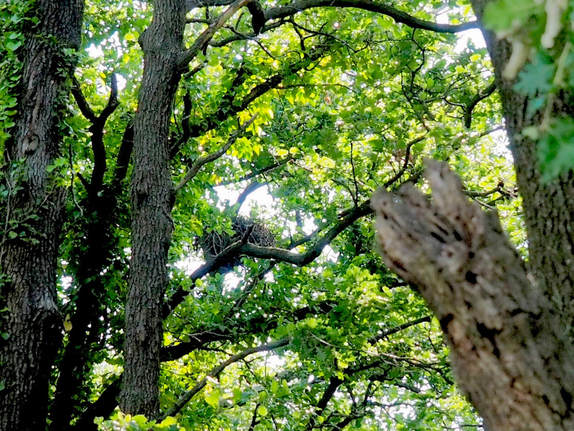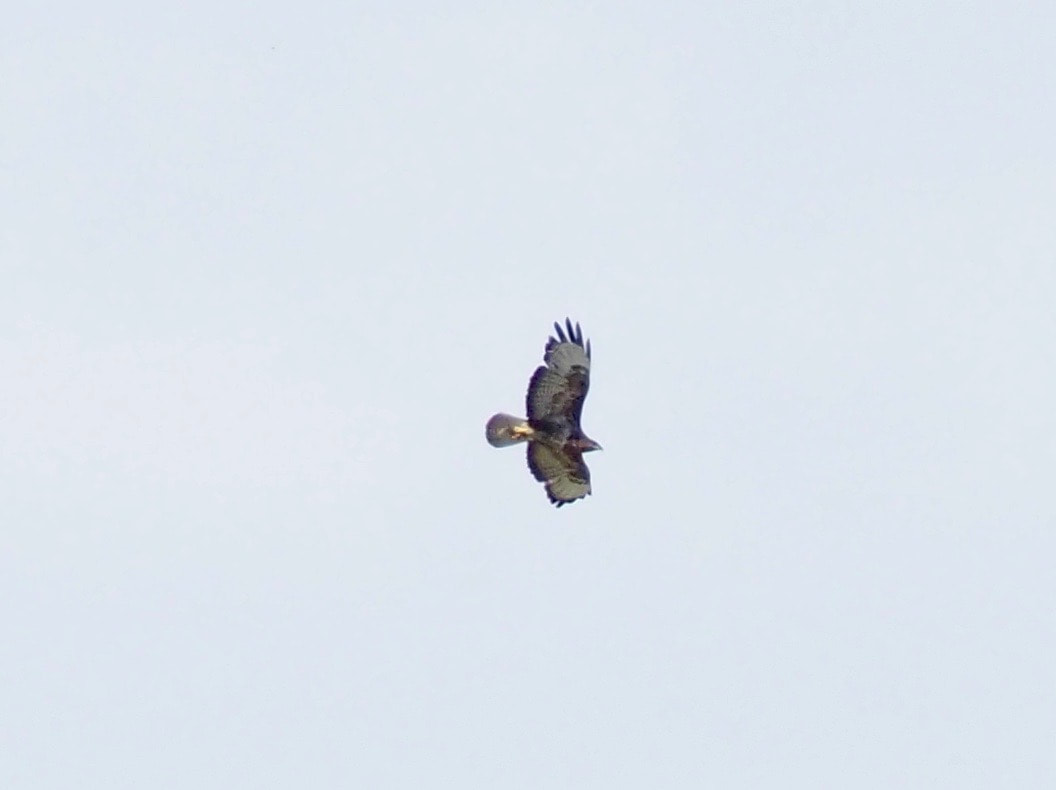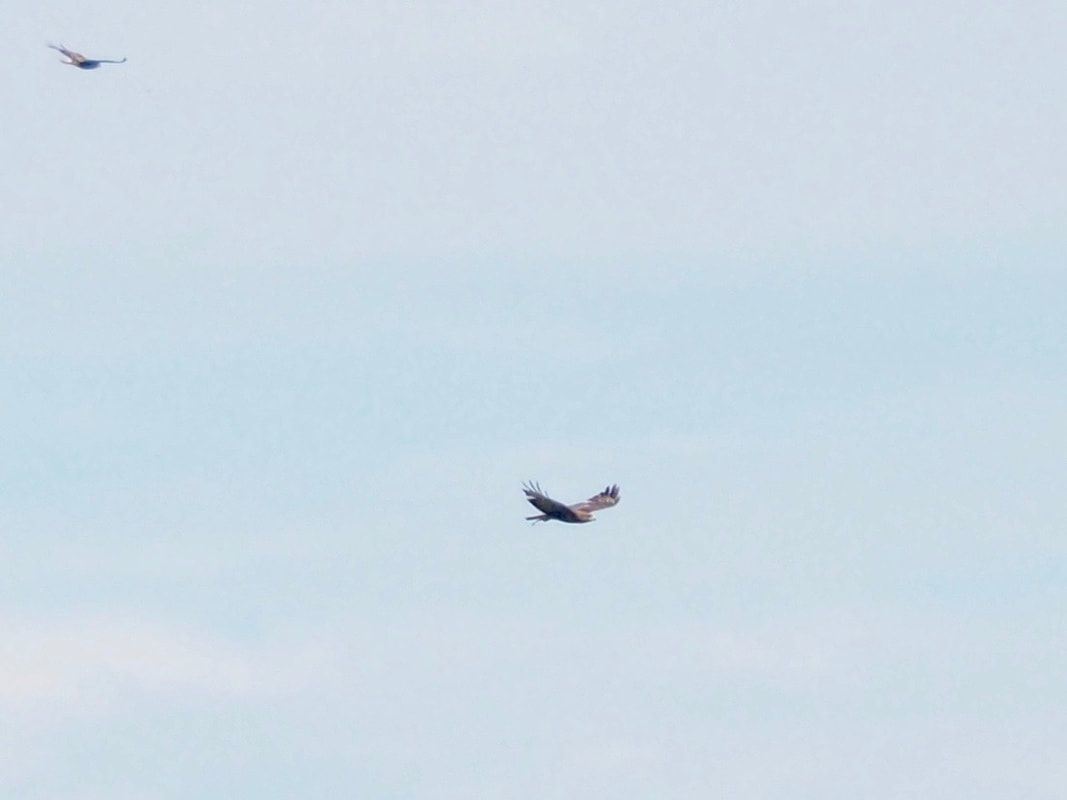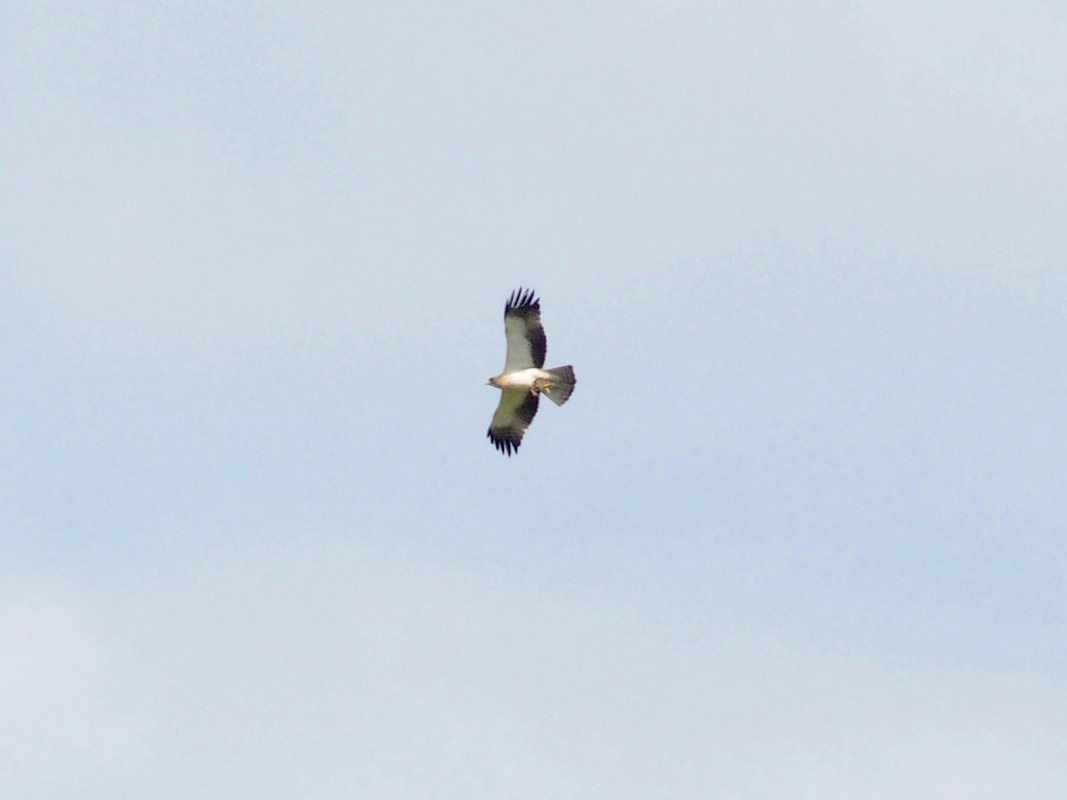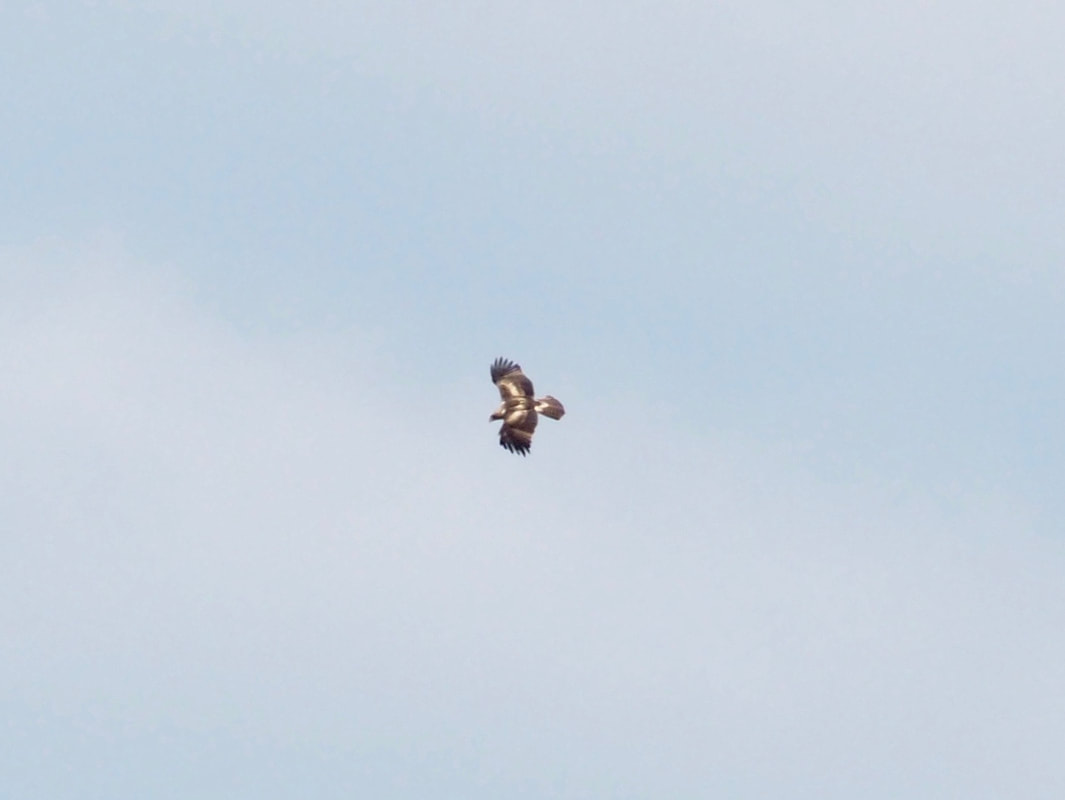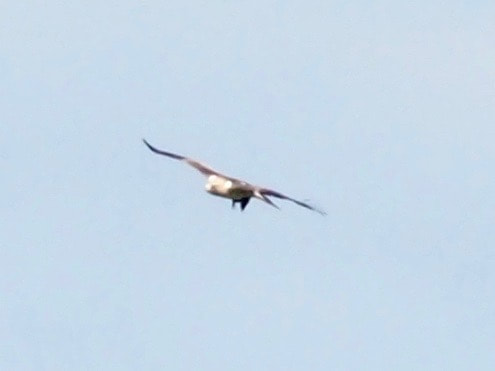May is a month that never disappoints when it comes to nature, and this year is no exception. After quite a wet spring, the wildflowers seem more abundant than ever (not to mention weeds in the garden). Insect numbers are increasing - including unwelcome tiger mosquitoes and ticks. Rock pools are full of tadpoles and young fire salamanders. I've seen one mouse and two foxes. But the stars of the show are, as usual, the birds. Singing their hearts out, building nests, feeding young...
An unusually cold couple of weeks at the beginning of the month delayed many migrants, but this week there was a tremendous "rush" as the GOR would describe it. They reported the 16th as remarkable on the hillock at St. Nazaire, when a "safe estimate" of 100,000 (five zeros is correct!) birds passed through. "Streams" of swifts, swallows and house martins for the most part, but 4,000 honey buzzards and 2,000 bee eaters were among them. And I thought I was lucky to spot about 60 honey buzzards over two days. Wave after wave of small flocks passed over the house - visible only because cloud and high winds forced them to fly low - and also the orchards.
At this time of year I usually avoid the vineyards and orchards, because they are literally crawling with ticks. But for various reasons I've ventured down there several times this last week, and boy has it been been worthwhile.
The areas of rough ground between and edging the plantations are a mass of grasses, thistles and other wildflowers. A superb haven for many creatures. I'm enjoying seeing it so lush, before it gets frazzled or cut back.
In terms of birdsong, nightingales are outdoing just about every other species for volume and length of song. In some stretches of trees and hedgerow, there seems to be a nightingale every few metres. And for some reason I've clapped eyes on more than in any previous year. One or two have even sung for some minutes in full view. That's a first.
Out among the vines and fruit trees themselves, it's woodlarks, serins, goldfinches and linnets that I hear and see most, with some corn and cirl buntings mixed in. Yesterday a smart male stonechat was chatting from the scrubbiest fringes of the southernmost vineyard. In April I also saw one or two whinchat on the opposite side. I need to establish if the latter are still around, though, because they might have been migrants; I've never noticed them here before.
One of the reasons for braving the ticks is that I wanted to see if the woodchat shrikes were back. Although I can't confirm if the same pair as last year has set up residence, I've so far seen three or four shrikes in different parts of the whole area, and one bird exactly where the female was feeding fledglings last year. Some might still be migrating through, I suppose, but I'd have thought most would have found territories by now. Today I saw two, in different sections of the walk. A few seconds after one flew out of a tree across the vines, I then realised a small-sounding bird was singing in an oak tree right next to me. I didn't recognise the song at all. If you could even call it a song. It was an extremely varied, unmusical jumble of squeaks, clicks, chats, rattles and sizzles, with snippets of nightingale, wryneck and several other birds mixed in. It stayed hidden, so I recorded it. On listening back home, I wonder if it is indeed imitating other species. It's definitely not a starling. I've read that great grey shrikes mimic small prey birds, hoping to attract them. We don't get the greys here but I wonder if my bird is the mate of the woodchat shrike that flew out of the tree. I need to listen again and compare with recordings on the internet - an activity which isn't always as easy as you'd think, depending on the song in question. It requires great patience and stamina.
I also wanted to check out something in one of the copses. Back in March, before the oaks came into leaf, I spotted a very big, twiggy nest, and wondered if it belonged to buzzards. There's a resident pair here, which I know has successfully reared at least one youngster, and I've always wondered where they nest. I've never seen a buzzard's nest before - and size is hard to judge when the construction is close to the treetop - so for all I knew this could belong to crows or magpies. And it might be old. After reading that buzzards do re-use old nests, I checked it periodically through that month and early April, but it seemed unchanged and unoccupied. Brambles and thorny climbers were too thick around the base for me to get close enough to look for droppings or other evidence of recent or past occupancy.
But things were different this week. On three days, as I entered the wood a good hundred metres from the nest, a buzzard slipped silently down through the trees and away. It either came from the nest itself or a tree very nearby. This seemed promising but I didn't want to disturb them by hanging around. Today I unexpectedly found a much clearer view of the nest from outside the copse, along a side I rarely walk.
From photos it looks as though this bird is carrying prey. There's a trailing "line" from her feet - the tail of a mammal perhaps? I've often asked myself how these birds find enough to eat in the orchards, but clearly there's a lot more around than I imagine, or they wouldn't stay.*
Luckily for me, it came towards us, and my camera proved a good substitute for binos. Underwings white along the front, black along the back. All-white body. Booted eagle - pale form!
These are classed as relatively rare in the region. I've only seen about four in the past, and never this close. It was so low, flapping and circling, that I also got clear views of the beautiful patterning on its back and the light V across its tail. Photos have picked up the identifying "headlights" on its shoulders, either side of its neck - markings I've never managed to see before.
I was astonished to come across a booted eagle at such low altitude, but on studying the photos more closely, I see it's feet are also holding prey. Something far more substantial than the mouthful carried by the buzzard. A partridge? Had I been looking in the right direction a moment or two earlier, I might have witnessed the spectacular "stoop" of which these eagles are capable when making a kill. Perhaps the heavy load meant it had to work hard to gain height, hence all that flapping and somewhat erratic flight path. Eventually it disappeared north-westwards - towards Buzzard Copse.
I was inclined to think this was one of those very late migrants - I would never expect to see one here normally - so asked the GOR for their opinion. They tell me it could well be nesting locally!
* Update 20/05/2018: Adult buzzard seen on the nest.
